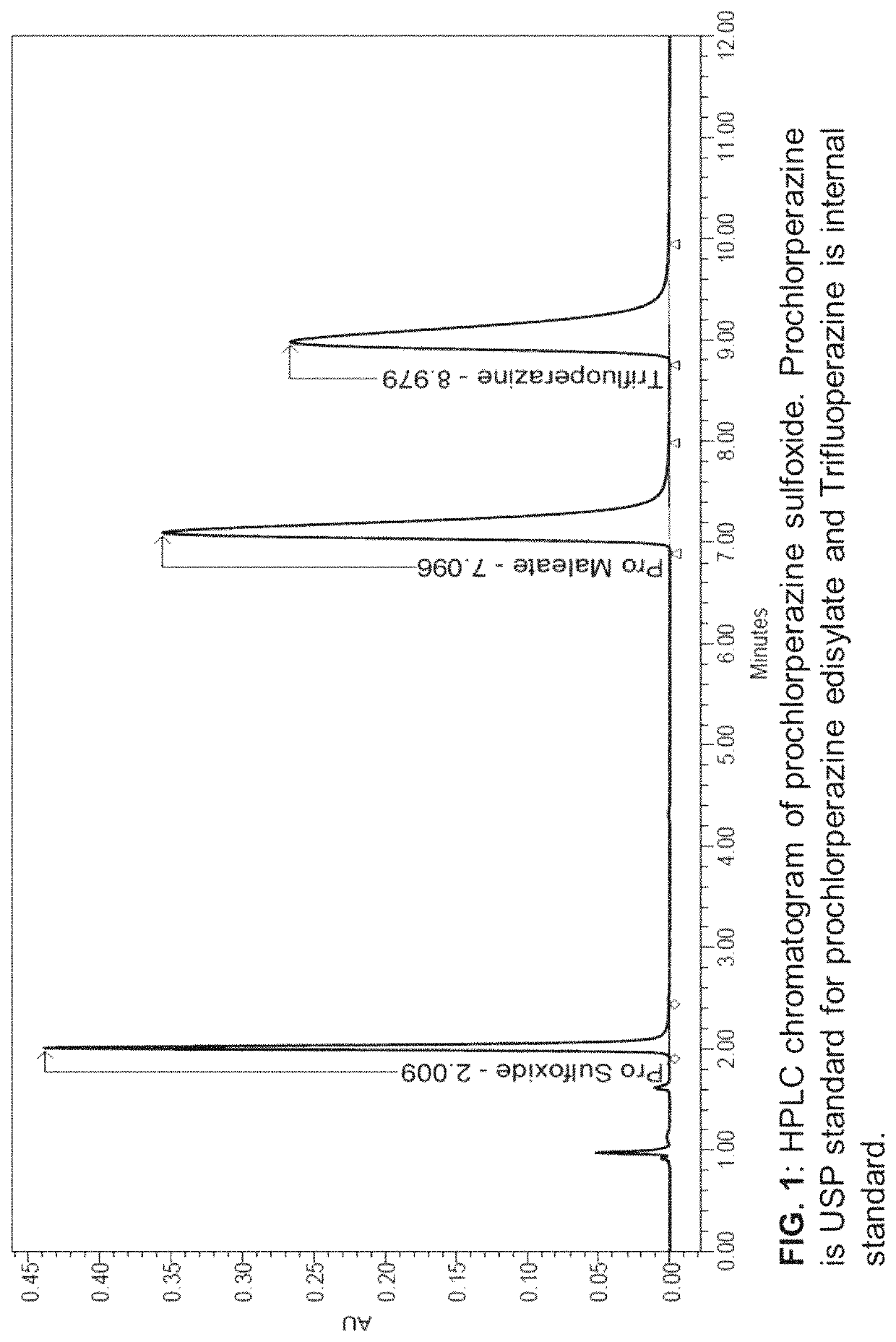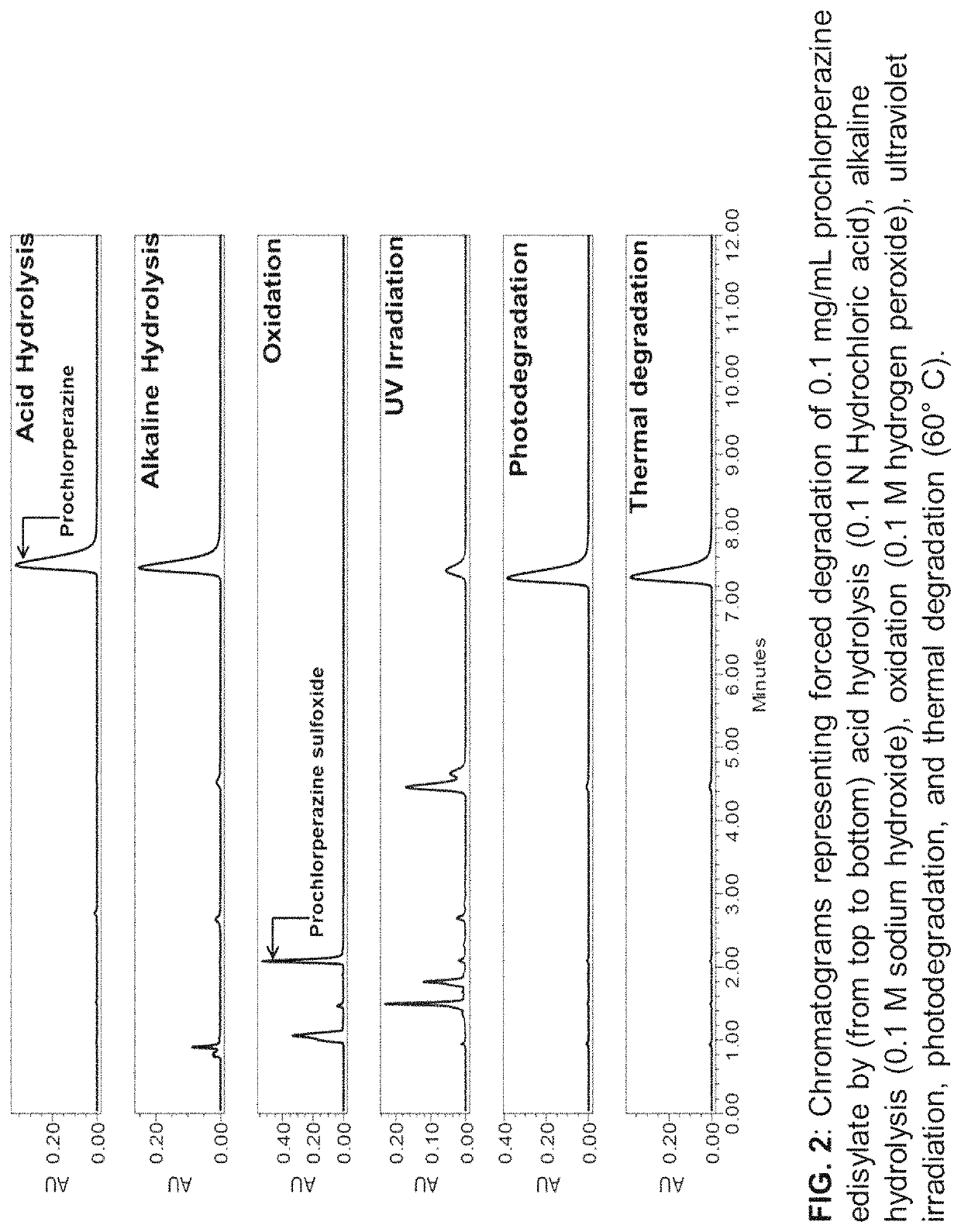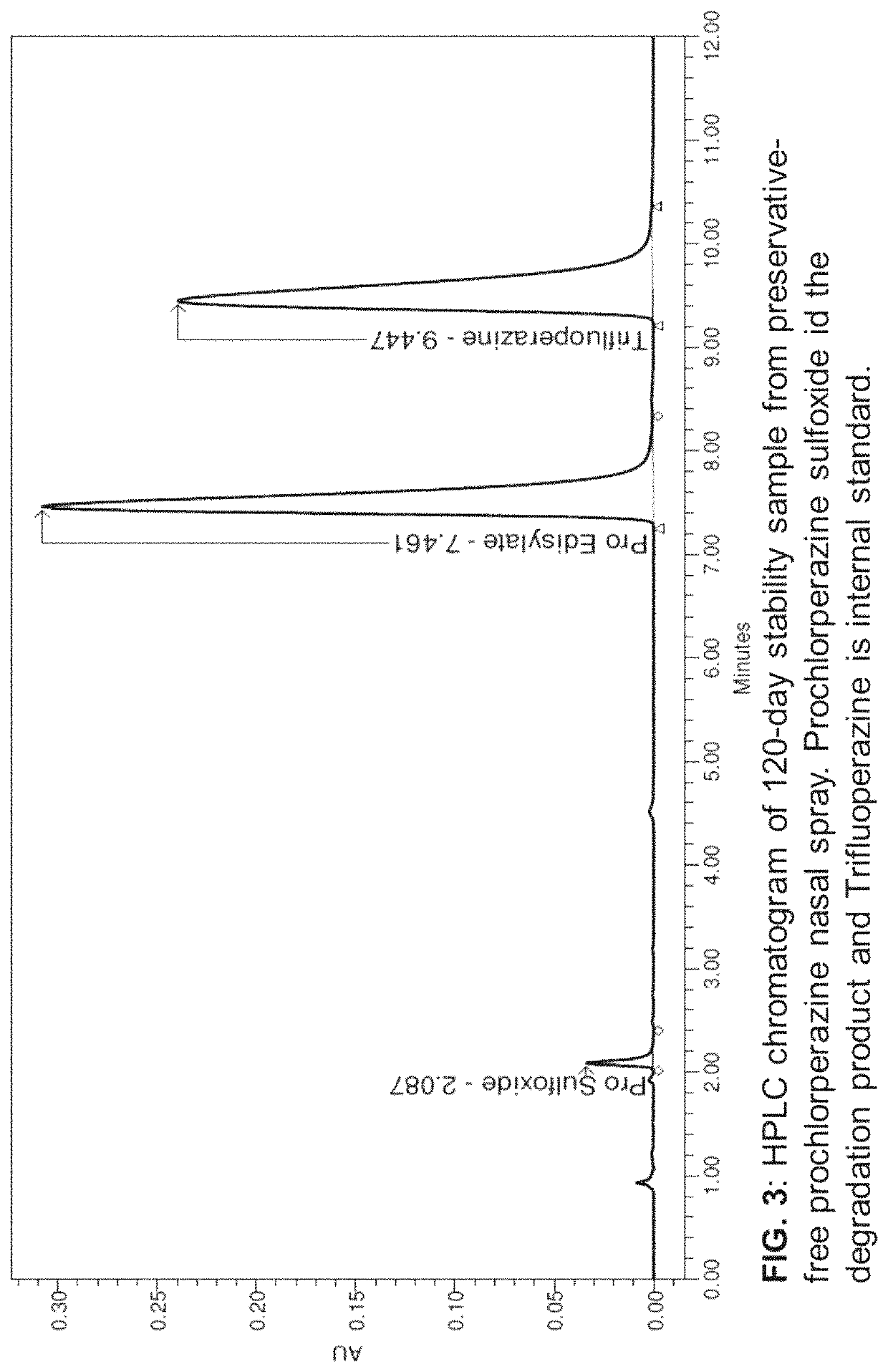Preservative-free prochlorperazine nasal spray for migraine therapy
a technology of prochlorperazine and nasal spray, which is applied in the direction of nervous disorders, drug compositions, inorganic non-active ingredients, etc., can solve the problems of increasing migraines, increasing physical dependence, and worsening nausea and vomiting, so as to reduce or eliminate side effects, reduce or eliminate variability in absorption, and reduce the effect of nausea and vomiting
- Summary
- Abstract
- Description
- Claims
- Application Information
AI Technical Summary
Benefits of technology
Problems solved by technology
Method used
Image
Examples
example 1
[0111]Formulation of Prochlorperazine Nasal Spray
[0112]PFP nasal spray was formulated by dissolving 250 mg of prochlorperazine edisylate in 50 mL of the preservative-free vehicle (0.5% w / v). The preservative free vehicle consists of 0.01% citric acid in 0.9% sodium chloride solution in deionized water; the final pH of the buffer is adjusted to 2.5 with dilute hydrochloric acid (0.1 N). The formulation was sterile filtered using 0.22 μm nylon syringe filters and filled in 60 mL capacity natural low-density polyethylene nasal spray bottles laminar airflow workbench (Labconco, Kansas City, Mo., USA).
example 2
[0113]Stability Studies Using High Performance Liquid Chromatography (HPLC)
[0114]The mobile phase consisted of the ion-pairing solution, acetonitrile, and methanol (50:40:10). The ion pairing solution was previously prepared by dissolving 4.33 g of sodium-1-octanesulfonic acid and 4.0 mL glacial acetic acid in 1000 mL of water. The chromatographic separation was achieved using a 3.9 mm×15 cm L1 (C18) column with 5 μm particle size. The flow-rate was 1.5 mL per minute and detection wavelength was 254 nm. The HPLC analysis was carried out by injecting 20 μL of sample into the Waters Alliance HPLC with Waters photodiode array (PDA) detector. Data acquisition and analysis was performed using WATERS® EMPOWER 3 software. The HPLC method was validated according to International Council on Harmonization (ICH) guidelines for various parameters including: linearity, accuracy and precision, robustness, and ruggedness. A standard 5-point calibration curve was constructed by linear regression of...
example 3
[0119]Analysis of Chemical Stability
[0120]For chemical stability sample analysis, five bottles of 0.5% w / v (5 mg / mL) prochlorperazine nasal spray which were prepared as described above were placed on a dry ventilated surface of the lab at room temperature (22.7±0.8° C., relative humidity (RH)−32.5±5%). At time intervals, 0, 20, 30, 45, and 60, and 120 days, a 100 μL aliquot of nasal spray was pipetted into a 15 mL centrifuge tube. This solution was spiked with 20 μL of 22.5 mg / mL internal standard (trifluoperazine) solution and the mixture was diluted with preservative-free vehicle to obtain a final concentration of 0.1 mg / mL of prochlorperazine and 0.09 mg / mL internal standard. The final solution was then injected in HPLC for analysis. The percentage assay values for stability samples were calculated using calibration curve described above using ratios of the peak areas of prochlorperazine and trifluoperazine obtained after integrating peaks from chromatograms of stability samples....
PUM
| Property | Measurement | Unit |
|---|---|---|
| concentration | aaaaa | aaaaa |
| concentration | aaaaa | aaaaa |
| concentration | aaaaa | aaaaa |
Abstract
Description
Claims
Application Information
 Login to View More
Login to View More - R&D
- Intellectual Property
- Life Sciences
- Materials
- Tech Scout
- Unparalleled Data Quality
- Higher Quality Content
- 60% Fewer Hallucinations
Browse by: Latest US Patents, China's latest patents, Technical Efficacy Thesaurus, Application Domain, Technology Topic, Popular Technical Reports.
© 2025 PatSnap. All rights reserved.Legal|Privacy policy|Modern Slavery Act Transparency Statement|Sitemap|About US| Contact US: help@patsnap.com



